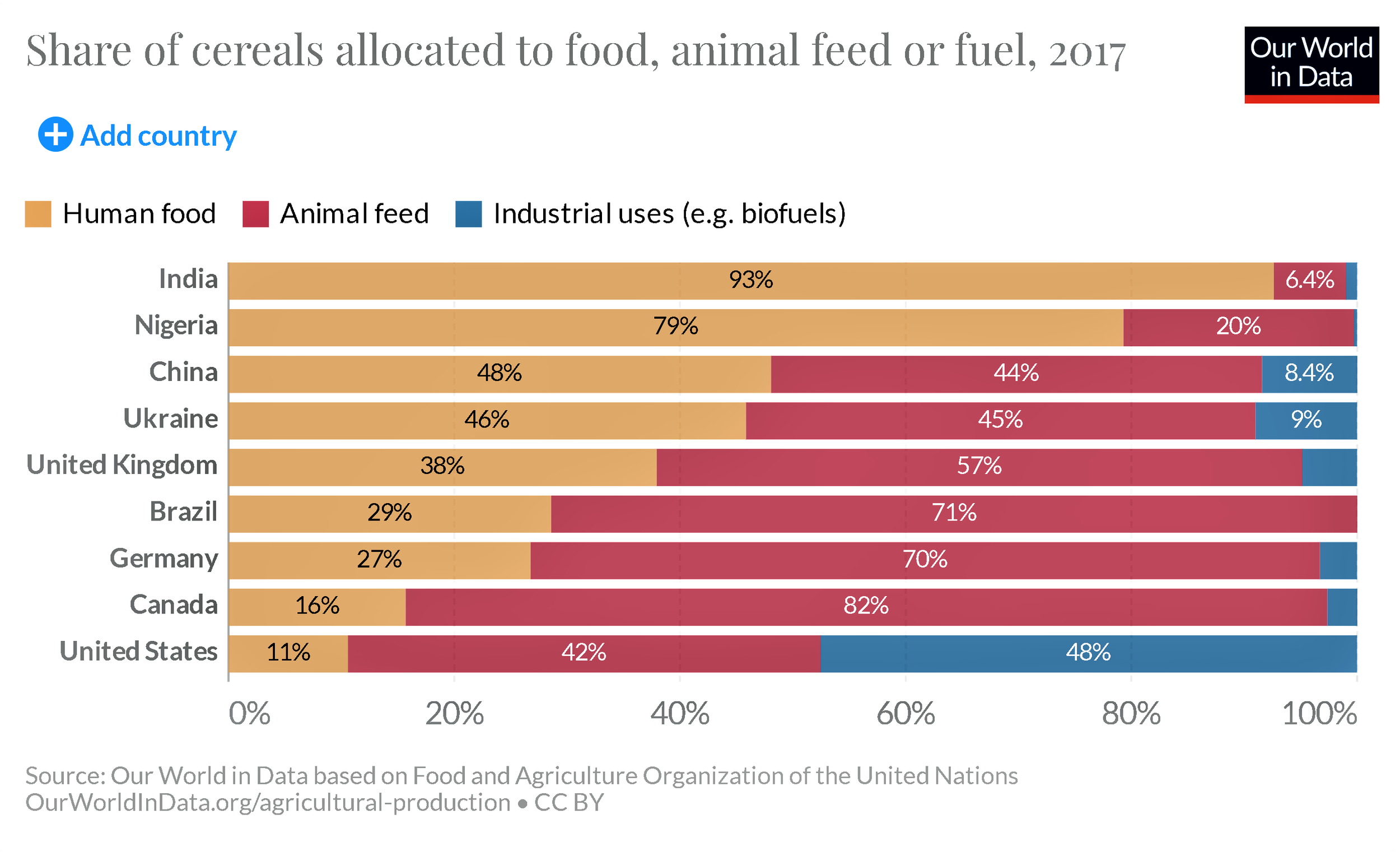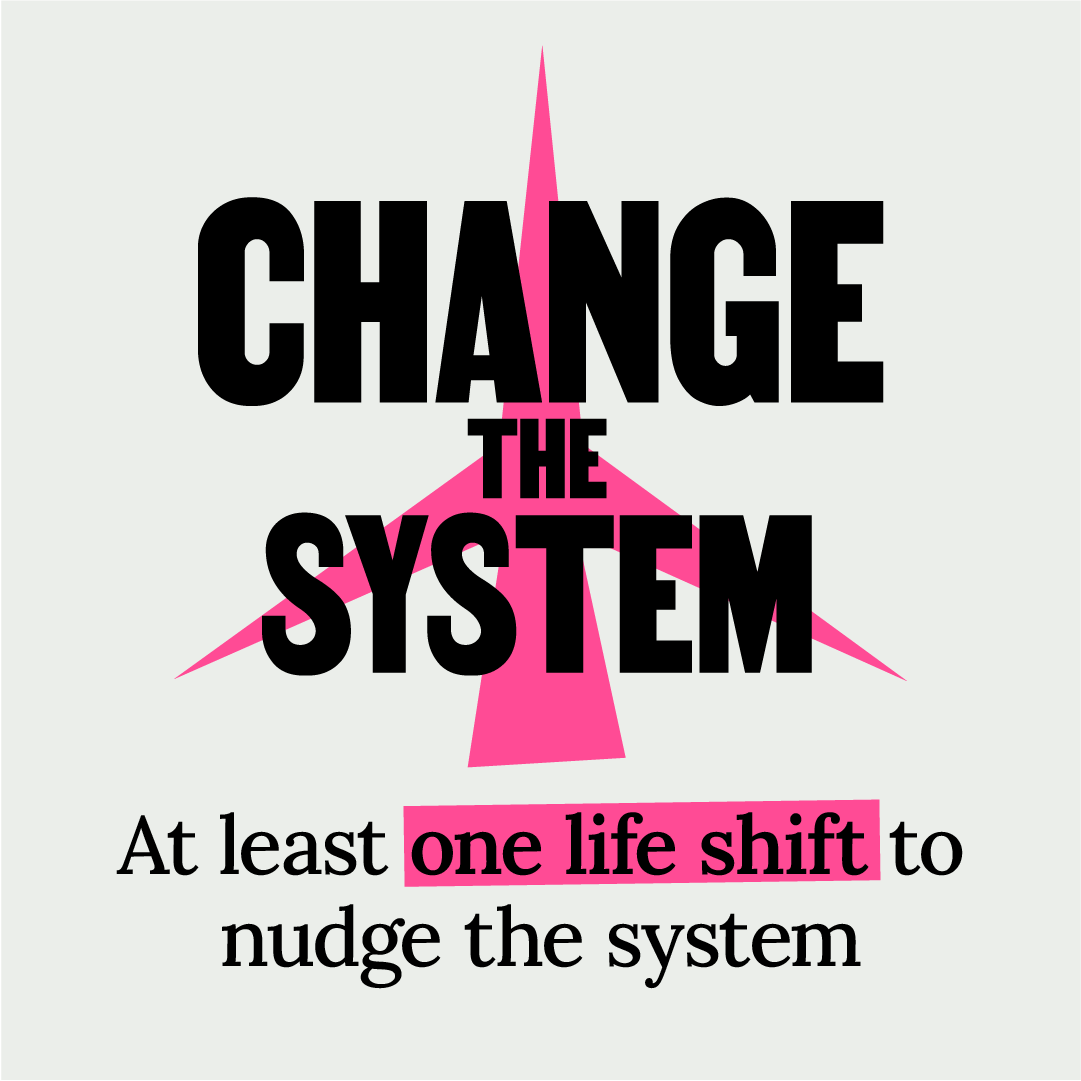Animals
Good News for Lab Animals
For the first time in more than 20 years, the Canadian government has introduced a Bill (S-5) to update the regulation of toxic substances. The plans include promoting the use and development of alternatives to animal testing and to phase out the use of animals in toxicity testing by 2035. Toxicity testing is one of the most painful forms of animal research — harming about 90,000 animals annually in Canada. It is also often a poor predictor of human health outcomes. Non-animal testing methods are becoming increasingly available and are often more reliable and more time and cost effective.
Food
Alternative Proteins
The latest IPCC Climate Report acknowledged the role plant-based and cultivated meats can play in future-proofing our food system. According to the Good Food Institute (GFI) sustainable proteins can help feed a growing population on a warming planet, reduce emissions and satisfy the growing demand for meat. Plus, plant-based and cultivated meat will make food supplies less vulnerable to extreme weather, conserve water, make balanced diets more affordable, and reduce food-borne diseases. GFI is calling for more open-sourced science and government supported R&D to accelerate the transition to sustainable food.
the Climate Crisis
Positive Tipping Points!
While climate news often focuses on negative tipping points, a new study shows that creating positive tipping points can help solve the climate crisis. For example, the study says that alternative proteins, with the right support, could be a powerful green tipping point to reduce emissions and protect biodiversity. And that triggering small interventions can grow into systemic changes. The Good Food Institute has already called for more public investment and policy support for plant-based and cultivated meats R&D. Such support could tip us towards climate, environmental and biodiversity benefits.
words of wisdom
“Today, given global habitat loss (especially deforestation and prairies turned to cropland) and widespread persistent toxins, we — modern humans — are the asteroid. The sixth mass extinction is here.”
— Kim Heacox, award-winning author
perspective
Wheat field, Kharkiv Oblast, Ukraine. Photo: Wikimedia Commons CC-BY-SA-3.0
We’re Growing Crops for Fuel and Livestock Rather Than People
The world is naturally focused on the terrible suffering of the people in Ukraine. As shock waves from the war spread out, many of the global impacts of the conflict have been under intense scrutiny. These include fossil fuel supplies and the threat of widespread food shortages given the major role of Ukraine and Russia in global grain production.
The war has prompted a re-examination of where our food and fuel come from and increased the urgency to address the flaws, inefficiencies and contradictions in the global food system.
Two Examples
A. Using farm animals to produce protein is notoriously inefficient, for example 25 kilos of grain produce one kilo of beef. The feed conversion ratios for pigs and chickens are somewhat more efficient at 6.4 and 3.3 respectively, but as Europe faces the prospect of a food crisis there is debate about feeding scarce grain to livestock rather than directly to hungry people.
B. In the US, one-third of all corn is turned into ethanol for fuel rather than food, yet it makes up only 6% of US domestic gasoline usage. Also, a new study shows corn-based ethanol is not a green solution after all, raising more questions about the food/feed/fuel competition for farmland at a time when global food supplies are under threat.
The Challenge in Europe
In the first example, 300 scientists have a proposal to address the crisis. “Global food insecurity is not caused by a shortage of food supply. It is caused by unequal distribution. There is more than enough food to feed the world … However, grains are fed to animals, used as biofuels, or wasted rather than feeding hungry people,” says co-author Sabine Gabrysch from the Potsdam Institute for Climate Impact Research.
The scientists propose:
1. Accelerating the shift towards healthier diets with less animal products in the EU and other high-income countries, thereby reducing the amount of grains needed for animal feed. “This terrible war forces us to re-think established practices, especially in the food sector,” says co-author Marco Springmann from Oxford University. “Eating more plants instead of meat could make more food available to the world, simply because animal production is inefficient.”
2. Increasing production of legumes and further greening EU agricultural policies, including reducing the dependency on nitrogen fertilizers or natural gas from Russia;
3. Reducing the amount of food waste e.g., the amount of wheat wasted in the EU alone is roughly equivalent to half of Ukraine’s wheat exports.
Harvesting corn in Michigan. Photo: James Baltz on Unsplash
US Corn-Based Ethanol
In the second example, a new study upends past assumptions that corn-based ethanol (CBE) grown in the US as a “renewable fuel” is a green solution. Instead, new information shows that CBE is a climate culprit — 24% more carbon intensive than gasoline.
Why? Reasons include the rapid growth of farming corn for ethanol, increased use of nitrogen fertilizers and the displacement of other food crop like soybeans and wheat. The study also included knock-on effects such as when farmers in other countries convert forests and grasslands to agriculture in response to higher commodity prices.
As you can see from the chart below, countries around the world allocate their cereal crop production among food, animal feed and biofuels differently.
The war in Ukraine is threatening the global food supply but the chart below shows that corn exports from Ukraine and Russia are dwarfed by the amount of corn being used for livestock feed and biofuels.
What To Do?
First, changing government incentives to reward farmers for growing food that goes directly to feed people rather than for biofuel or livestock would help alleviate the current food crisis and support a more sustainable food system.
Second, wheat producers, including Canada and the US, are being asked to increase production to offset global shortfalls. But, farmers will have to overcome significantly higher temperatures and historic drought levels exacerbated by climate change and higher fertilizer prices due to the interruption of Russian supply.
Third, with an approaching global food crisis, there needs to be an urgent focus on how to better manage the food/feed/fuel competition for the same patch of farmland.
The war in Ukraine makes the strongest case yet to accelerate the transition to renewable energy while encouraging farmers to use the most efficient and lowest carbon footprint methods to produce the food the world needs.
nurture nature
Photo: David Clode on Unsplash
With more than a million species at risk of extinction, international negotiators met in Geneva last month searching for common ground on a Paris-style agreement for nature.
The draft UN Convention on Biological Diversity aims to protect 30% of land and sea, eliminate billions of dollars of environmentally damaging government subsidies, and restore 20% of degraded freshwater, marine and land ecosystems by 2030.
Curbs on agricultural pollution including pesticides and nitrogen waste – commonly the result of intensive farming and fossil fuels — are some of the many controversial issues being negotiated. The agreement is expected to be finalized in Kunming, China at the end of August.
deeper dive
Photo: Etienne Jong on Unsplash
Six Ways We Can Help Our Climate
People in richer nations can help avert climate breakdown by making six lifestyle changes to rein-in the runaway consumption that is helping drive it.
A study from Leeds University, Arup and the C40 group of world cities found that these six actions taken by individuals making small changes can have a huge impact on reducing emissions. They would account for one-quarter of the reductions needed for global heating not to exceed 1.5C as well as turning up the pressure on government and the private sector to make systemic changes.
The research counters the widespread belief that individual action doesn’t make enough of an impact and it inspired The Jump campaign, which supports people in making the necessary changes.
Tom Bailey, one of the campaign’s co-founders told The Guardian, “The research is clear that governments and the private sector have the largest role to play but it is also equally clear from our analysis that individuals and communities can make a huge difference.”
So, what are these changes?
1. Buy no more than three new items of clothing per year
The clothing and textiles industry accounts for more greenhouse gas emissions than international aviation and shipping combined — made worse by the rise of fast, low-cost, disposable fashion which comes with human and environmental costs such as water pollution and poor working conditions. The Jump campaign urges people to buy second hand, repair, and buy only three durable items a year.
2. Keep electronic products for at least seven years
The process of extracting rare earth metals and producing more and more products such as smartphones, personal computers and TVs, often generates more emissions than using the items themselves. For example, only 13% of an iPhone 11’s lifetime emissions result from its use; the rest come from its production, transport and end-of-life processing.
Try repairing equipment, borrowing, renting or buying second-hand, and keep new items to a minimum.
3. Take one short-haul flight every three years and one long-haul flight every eight years
This would halve aviation’s contribution to global emissions (currently about 2%) which is increasing more than any other form of transportation.
Alternatives include traveling overland and/or visiting places closer to home that are accessible by train, ferry or bus. Also, use technology to help keep in touch with family and friends.
4. Shed private vehicles where possible or keep existing vehicles for longer
Car ownership is a huge driver of emissions. Globally, transportation is responsible for about one-quarter of greenhouse gas emissions of which more than two-thirds come from road vehicles.
The campaign calls on people to replace private vehicles where possible with public transportation, walking, cycling or car clubs. The study says that despite the emphasis on electric vehicles (EVs) as a way to tackle climate change, we need to reduce the number of cars on the road because manufacturing them is a significant source of emissions — including EVs.
5. Eat Green — a largely plant-based diet, with healthy portions and no waste
Approximately 35% of total global emissions come from the food system and three changes would dramatically reduce the climate impact of the food we eat:
Move to a mostly plant-based diet
Eat everything you buy
Eat healthy amounts
Changing our behaviours around food is the most impactful of all the shifts. And it’s not just about climate change; if you look at biodiversity loss, land use change, fertilizers in the ocean creating dead zones and the massive extinction and loss of insects due to pesticides, these problems are all driven by food.
The most popular meat-reduction techniques are:
Make at least one of your meals vegetarian
Double the veg, halve the meat
Eat no red meat
Set yourself a maximum number of animal products to consume today
Eat no processed meat
Try a new vegetarian recipe
6. Push to Change the system
Some of the shifts the campaign calls for depend partly on systemic change e.g., in some areas public transportation will be nonexistent leaving people with no choice but to use their cars. But people can create pressure to change these systems by making at least one change in their own lives that will impact a system. Collectively this can have a huge impact.
Change to a green energy supplier
Install energy efficiency measures at home such as insulation and heat pumps
Switch your pension to a green investor
Use ethical and green banks
Use energy efficiently at home
Push for change through activism or peaceful protest or writing to your elected official
The study concludes that all sections of society have a role to play and there’s lots the individual can do. The best part is that we don’t need approvals or policy legislation. We can just get on and do it.
Animal Welfare
teach us a lesson
A Spanish company aims to open the world’s first commercial octopus farm in the Canary Islands in 2023 and scientists are warning it could be an ethical and environmental quagmire. Since the 2020 Netflix film "My Octopus Teacher", about a filmmaker's friendship with a female octopus, concern for their wellbeing has grown. And after reviewing 300 scientific studies, the London School of Economics concluded that octopus are extremely intelligent, curious, sentient beings capable of experiencing distress and happiness, and that ‘high welfare’ industrial farming is impossible.
Good news
“Meat the Future”
This awarding winning documentary traces the remarkable journey of Dr. Uma Valeti, from Mayo Clinic cardiologist to one of the leading cultivated meat pioneers, as founder and CEO of Upside Foods. It’s the story of his passion to unleash the multiple benefits — health, climate and environmental — of growing meat from cells, without animal slaughter. The doc, narrated by Dr. Jane Goodall, is written and directed by the award-winning Canadian filmmaker Liz Marshall, and arrives on Apple TV, the Documentary Channel, and CBC Gem on April 5.
The Carbon Tax on Talent
78% of US business students prefer to work for a company with good environmental practices. This is the result of a shift in attitudes resulting in the “carbon tax on talent” according to a study and survey by Yale University. Furthermore, 51% of students are willing to accept a lower salary to work for such companies. The report says “business students are increasingly concerned about the climate crisis and want sustainability to be more integrated into their education and their professional lives.”
What’s Up With Vat?
There are many hurdles in the race to bring cultivated meat to market (real meat grown from animal cells in a bioreactor) to fulfil the climate, environmental and food safety promise of this new way of producing food. They range from consumer acceptance to regulatory frameworks. But scientists and engineers are tackling one of the biggest challenges which is to improve production methods to achieve economies of scale.
Most cultivated meat bioreactors are adapted from technology used for pharmaceuticals. Ark Biotech is engineering new, fit-for-purpose bioreactors that are much larger and more efficient. At the other end of the spectrum, Stamm Biotech is developing a desk-top-sized bioreactor, using 3D printing, to help accelerate scientific advancements by reducing the need to test innovations in large batch bioreactors.
Charting Our Path
Global Inequality of Carbon Emissions
Source: Carbon Brief
A new study published in Nature Sustainability highlights the global inequality in emissions between people in rich and poor countries and, guess what? The top 1% win the carbon emissions prize.
The average carbon footprint of the top 1% of emitters was more than 75x higher than the bottom 50%. “Carbon inequality is a mirror to extreme income and wealth inequality experienced at a national and global level today,” the study says.
The carbon footprint of the average American is almost 25x higher than a person in sub-Saharan Africa. The study shows that eradicating “extreme poverty” – by raising everyone above the US$1.90 per day threshold – would drive up global carbon emissions by less than 1%.
“The inequality is just insane,” the lead author of the study told Carbon Brief. “If we want to reduce our carbon emissions, we really need to do something about the consumption patterns of the super-rich.”
riveting reads
1. Prominent climate campaigner Bill McKibben on whether the climate crisis and the war in Ukraine will together create a crucial tipping point in the transition to clean energy and a safer world (The New Yorker). In a World on Fire, Stop Burning Things
2. A look at the future of plant-based milk (The New York Times). Have We Reached Peak Plant Milk? Not Even Close
3. While news on the climate is often grim, taking individual or collective action not only helps people feel better but it can bring about genuine change (Fast Company). How to get past despair and take powerful action on climate change
4. The inside story on Carl Icahn's animal-welfare-focused proxy fight against McDonald's (Vox). Carl Icahn launched a proxy fight against McDonald’s over pig welfare
5. The cultural ties between meat eating and masculinity are breaking down (The Guardian). Meet the ‘vegan bros’ here to bust the myth that real men eat meat
6. Any diet — including plant-based — can be unhealthy if it relies too heavily on highly-processed food. This article from a well-respected source pushes back on critics of plant-based eating. British Dietetic Association confirms well-planned vegan diets can support healthy living in people of all ages


















